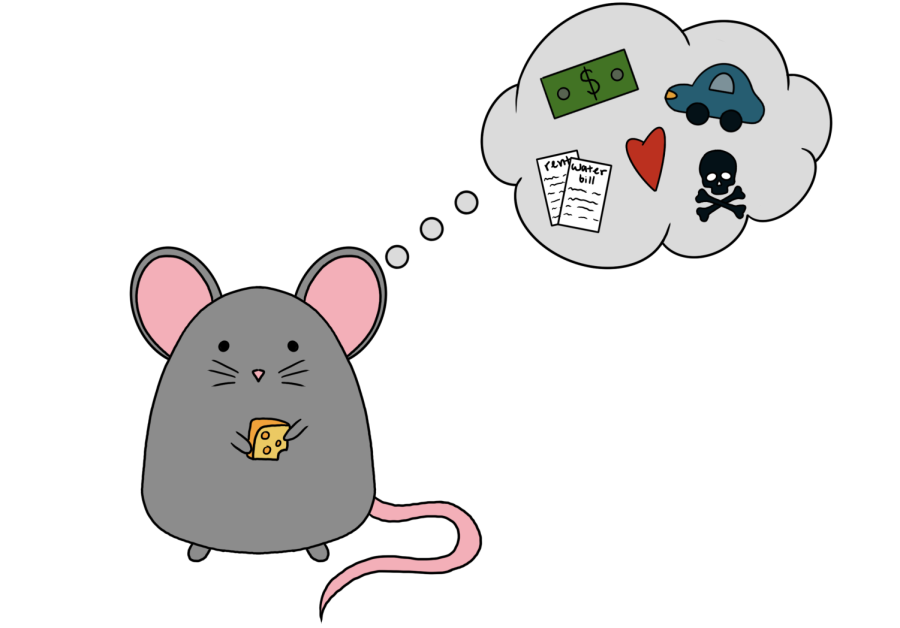Scientists in London successfully transplanted human neurons into mouse brains to study human brain diseases in August. This allowed the scientists to study malfunctioning human neurons for a longer period because the mouse body keeps the neurons alive. However, this type of science is fraught with ethical concerns.
It is a long-held method in biology to transplant tissue from one animal into another to study development and disease. These combinations, or chimeras, can be made from two individuals of the same species or different species, as is the case with the studies mentioned above.
The usage of chimeras within a single species has given biologists the ability to see how different parts of embryos can become different body parts over time. It is also how we can get two-headed lizards or worms.
Chimeras made from two different species, like human brain cells in mice, have allowed scientists to learn how neurons develop and behave in people with Down syndrome or brain injuries.
Typically, chimeras allow scientists to skirt around other methods that would be either technically impossible or morally abhorrent, like manipulating brain development in an early human embryo. In this case, the usage of chimeras allows scientists to visualize disease or development processes in a living host that is easier to look inside than the uterus.
Vincenzo De Paola’s lab in London inserts human neurons into mouse brains to watch how the human cells mature and form connections, which can be tracked by visualizing each type of cell over time, as well as tracking electrical signals passed from neuron to neuron.
Members of the scientific community have expressed concern over the use of human brain cells in mice as well as where the science may be leading.
“The neural combinations touch on what it is that makes us essentially humans – our minds, our memories, our sense of self,” Alta Charo, a bioethicist and professor emerita at the University of Wisconsin-Madison, told Nature.
Charo said the public finds the idea of a human mind trapped in an animal’s body disturbing.
While some ethicists and scientists are trying to educate the public about how this science is being applied and convince laypeople of ethical justifications, hesitation remains.
Generally, audiences may not be familiar with highly technical experimental methods and techniques, but they are perfectly capable of understanding the larger and more important questions we should always be asking as a society.
Ali Brivanlou, a developmental biologist at Rockefeller University in New York City, told Nature the public could be easily swayed if a well-known brain disease were cured this way, like Huntington’s or Alzheimer’s disease.
But, to see it that way is to misunderstand the value that public opinion and questioning add to science. It is incorrect and short-sighted to think that people cannot or will not see beyond the simple cure of a disease to fairly weigh the costs and benefits of letting an ethically risky method grow without restraint.
The public has every right to question scientists’ methods and ethics. After all, the public must give consent on both an individual and a group level to allow for the legal use of their tissue in these types of studies.
This questioning also benefits the scientists themselves. Just as the doctor-patient relationship can benefit from open communication and listening on both ends, so can the relationship between scientists and the public.
There exists an important checks and balances system between experts and laypeople, two groups that may have different opinions on priorities, ethical boundaries and the moral lines that our society should have.
That is not to say these decisions should be made by a simple majority or in broad strokes. On the contrary, if the method sparks controversy even among a minority of people, it should be examined in more detail. In situations like these, the best conclusion to draw is likely one that is complicated and nuanced.
The ethics of using live human tissue transplanted into a living animal are complicated, and it is the responsibility of the scientific community to not only justify the work in terms of potential curative value at every new technical development but also listen to the public’s concerns with open minds. This is how we can keep science honest and ethically sound while educating the public along the way to prevent a deep schism between science and the people.
Would you like Allison to follow up on this topic or explore something specific? Contact her at [email protected] with questions, comments or story ideas.






















